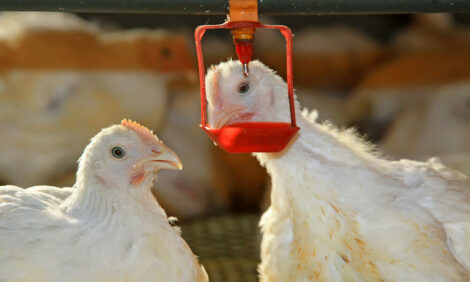



Weekly Outlook: Soybean Consumption
URBANA - If the 2007 soybean crop lives up to its potential, some further weakness in soybean prices can eventually be expected, particularly in prices for the 2007 crop, said a University of Illinois Extension marketing specialist."November 2007 futures may have risk down to near the $7.20 area," said Darrel Good.
Good's comments came as he reviewed the recent trajectory of soybean prices. The USDA's March 30 Grain Stocks and Prospective Plantings reports were generally viewed as friendly for soybean prices. However, prices have declined sharply over the past two weeks.
"Smaller-than-expected March inventories of U.S. soybeans and smaller-than-expected soybean planting intentions were judged to be supportive of soybean prices, with some calling the news 'widely bullish,'" said Good. "Since the release of the reports, however, soybean prices have declined 35 to 40 cents.
"Two important and related factors have contributed to the decline. These are the decline in the rate of consumption of U.S. soybeans and the much larger soybean production estimates for South America."
The USDA now expects the 2006-07 marketing year domestic soybean crush to reach only 1.765 billion bushels, 15 million less than the projection that has been in place since November and only 26 million bushels larger than last year's crush. The crush during the first half of the marketing year totaled 908.5 million bushels, 28.9 million bushels larger than the crush of a year earlier.
"The smaller forecast for domestic crush reflects anticipation of a slowdown in both domestic and export use of soybean meal," said Good. "The USDA lowered the projection of marketing year soybean meal consumption by 600,000 tons, or 1.4 percent. Domestic use is expected to be negatively impacted by declining livestock feeding margins, while exports will face competition from increased supplies from South America."
The USDA now projects 2006-07 marketing year exports of U.S. soybeans at 1.08 billion bushels, 20 million less than forecast in March and 65 million less than the largest forecast made in December 2006. The Census Bureau provides the official count for soybean exports on a monthly basis, but with about a six-week lag.
"From September 2006 through January 2007, cumulative Census Bureau export estimates for soybeans were almost identical to the estimate in the weekly USDA Export Sales report and about 22 million less than reported in the USDA's weekly report of export inspections," said Good. "Through February, the Census Bureau estimate was 7 and 13.5 million less than the USDA estimates, respectively.
"The USDA's Export Sales report showed cumulative exports through April 5 of 878.5 million bushels, while the inspections report showed a total of 882 million. If those estimates slightly overstate Census Bureau figures, then exports during the last 21 weeks of the year need to total about 210 million bushels, for an average of 9.9. million per week, to reach the USDA projection."
For the four weeks ended April 5, shipments averaged about 21.5 million bushels per week, Good noted. Inspections totaled only 12.5 million for the week ended April 12. A further slowdown in the rate is expected as South American supplies from the 2007 harvest are now available.
The USDA now projects the 2007 South American harvest at 4.135 billion bushels, 150 million larger than the March forecast and 310 million larger than the record harvest of 2006. Production in Brazil is expected to be up almost 11 percent even though area harvested is down 5.5 percent.
"The Argentine crop is expected to be almost 17 percent larger, with harvested acreage up only 4 percent," said Good. "That crop will result in much smaller exports of U.S. soybeans through at least September 2007."
Good added that the forecast of seed use of soybeans in the United States this year was reduced four million bushels due to the smaller-than-expected planting intentions. However, the projection of feed and residual use of soybeans was increased 20 million bushels based on the large disappearance in that category during the first half of the year.
"The large, unexplained use may imply that the 2006 crop has been slightly overestimated," he said.
Stocks of U.S. soybeans at the end of the current marketing year are projected at 615 million bushels, representing 20.3 percent of projected consumption and at least 400 million above what might be considered an adequate level of year-ending stocks.
The large inventory partially offsets the impact of the planned decline in acreage, he noted. If soybean acreage is near intentions, about 66.2 million acres will be harvested in 2007. If the U.S. average yield is at the average of the past three years (42.6 bushels), the 2007 crop would total 2.82 billion bushels. A crop of that size would likely point to 2007-08 marketing year ending stocks well above 300 million bushels.
"Even with the recent decline in prices, soybean prices remain about $1.50 above the level that would have historically been expected by the size of the current surplus," he said. "The continued price strength is coming primarily from soybean oil prices.
"General strength in vegetable oil prices, particularly palm oil prices, due to expanding world biodiesel production, along with high crude oil prices, account for the strength in soybean oil prices."









